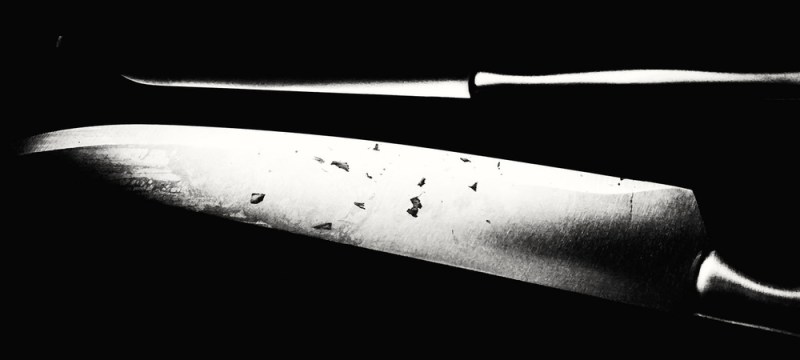There are tools for every trade; you have lenses for photographers, brushes for painters, buzzers for barbers, — all of which act as extensions of the human hand. Each tool serves a specific purpose, which we utilize in ways that allow us to become more dynamic, resourceful, and overall proficient at whatever hobby/lifestyle we’re working toward.
Chefs have a plethora of different instruments from which to choose that yield different end products when preparing dishes. Every chef worth their salt has a collection of knives, and the Japanese-made Santoku knife, in particular, should be a key player in a cook’s arsenal, whether you’re a cooking novice or a virtuoso in the kitchen.
Three’s Company: The History Of Santoku Knives

In learning about the Santoku, it’s good to start with the meaning behind the knife’s name. Coined during the 1920s, the name of the utensil comes from the Japanese phrase “three virtues.” But what exactly are these “‘virtues'” and why are there three of them? Well, there is more than one answer.
The virtues of the Santoku knife are evident in Buddhism. Throughout the 1910s and 1920s, some believed the attributes of a Santoku to be more metaphorical, identifying them as clever, modern, and Western. Others put more literal meaning behind them, advocating that the blade was good for chopping, dicing, and mincing. There were also those who took to the knife’s physical characteristics to identify its three uses. The tip allowed chefs to make more precise cuts, the heel was geared toward heavier chopping, and the main edge was used for any other miscellaneous cutting tasks. It’s also been said the three virtues are cutting meat, fish, and vegetables.
Santoku Knives Are Chopping Down The Competition

The Santoku is heavily influenced by the traditional American chef’s knife but, originating in Japan, the fabrication of the knife’s design from the end of the handle to the tip of the blade is quite different from more Western-style knives. For starters, rather than the round-bodied blade of a chef’s knife, the Santoku’s blade resembles a sheep’s foot, placing less emphasis on the curve of the blade altogether. A Western chef’s knife requires the user to generate a rocking momentum to efficiently slice through food, something the curvature of the blade helps to achieve. On the other hand, the Santoku cuts best with a forward-down motion, which is made possible thanks to the sturdy construction of the blade. Many find it easier to maintain control of a Santoku knife than the ordinary chef’s knife for this very reason. Not only is the blade of a Santoku usually harder than a Western-style chef’s knives, but it’s also wider to help scoop ingredients from a cutting board into a pan or pot.

The average Santoku knife ranges from 6″ to 7.5″ in length, which is smaller than the average French or Germain chef’s knife (anywhere from 8″ to 10″). Thus, bladesmiths decided on a smaller design so that the Santoku could fit comfortably in smaller hands. Santokus are also known for their balanced feel because of how the blade and handle meet. Lightweight and even-handed, the Santoku is a far less fatiguing knife to use on a regular basis compared to other chef’s knives. You can also spot a Santoku knife by taking note of the numerous ridges along the edge of the blade. These hollowed-out markings provide small amounts of air to separate the surface of the blade from the food being cut, making it less likely for food to stick to the edge as it’s being used.
After all this, the only real question left is; when will you get your Santoku knife?
